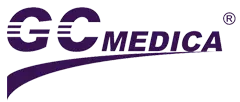-
Laparoscopic & Endoscopic Products
-
Laparoscopic Procedures
- Heated Insufflation Tube
- Laparoscopic Smoke Filter
- High FLow CO2 Laparoscopic Insufflation Filter Tube Set
- Veress Needle
- High Flow Heated Insufflation Tube
- Arthroscopy Irrigation Set
- Disposable Bladeless / Bladed Trocar with Thread / Balloon
- Disposable Wound Protector
- Disposable Height Changeable Wound Protector
- Retrieval Bag
- Laparoscopic Suction Irrigation Set
- Laparoscopic Insufflator
- Endoscopy Care and Accessories
-
Laparoscopic Procedures
- Respiratory & Anesthesia
- Cardiothoracic Surgery
- Gynaecology
-
Urology
- CathVantage™ Portable Hydrophilic Intermittent Catheter
-
Cysto/Bladder Irrigation Set
- M-easy Bladder Irrigation Set
- B-cylind Bladder Irrigation Set
- S-tur Bladder Irrigation Set
- S-uni Bladder Irrigation Set
- B-uro Bladder Irrigation Set
- Premi Bladder Irrigation Set
- J-pump Bladder Irrigation Set
- J-tur Bladder Irrigation Set
- H-pump Bladder Irrigation Set
- Sup-flow Bladder Irrigation Set
- Maple Irrigation Set
- Peony Irrigation Set
- Nelaton Catheter
- Urinary Drainage Bag
- Urinary Drainage Leg Bag
- Enema Kits
- Sitz Bath Kits
- Click Seal Specimen Container
- Silicone Male Catheter
- Spigot Catheter and Adaptor
- Sandalwood Irrigation Set
- Freesia Irrigation Set
- Daffodil Irrigation Set
- Single-Use Digital Flexible Ureteroscope
- Enteral Feeding Products
- Dental
- Fluid Management
- Warming Unit and Warming Blanket
-
Operating Room Necessities
- Nasal and Oral Sucker
- Disposable Medical Equipment Covers
- Magnetic Drape / Magnetic Instrument Mat
- Suction Handle
-
General Surgery
- Perfusion Atomizer System
- Gastric Sump Tube
- Surgical Hand Immobilizer / Lead Hand for Surgery
- Administration Set for Blood
- Ear/Ulcer Syringe
- Bulb Irrigation Syringe
- Toomey Irrigation Syringe
- Mixing Cannula
- Basin Liner/Basin Drape
- Medical Brush
- Sponge Stick
- Suture Retriever
- Needle Counter
- Disposable Calibration Tube
- Heparin Cap
- 100ML Bulb Irrigation Syringe
- Scleral Marker
- Surgical Light Handle
- Mucosal Atomization Device
- Durable Medical Equipment
- Patient Handling System
- PVC-FREE Medical Device
- Emergency
-
Patient Air Transfer Mattress Online WholesaleDec 17 , 2024
-
Cystoscopy Irrigation Set Online Wholesale | GCMEDICADec 17 , 2024
-
Patient Warming Device and Blanket Online wholesaleDec 16 , 2024
-
CathVantage™ Twist Intermittent Catheter | GCMEDICASep 20 , 2024
-
Single-Use Digital Flexible Ureteroscope | GCMEDICASep 20 , 2024
Through the Nasal Route for Nasal Intubation Tube
Within the nasal cannula, tracheal intubation can be done through the two main passages in the nostrils. The lower pathway is located at the bottom of the inferior nasal concha. The upper pathway is located above the inferior nasal concha and below the middle nasal concha. The lower pathway may be considered a safer route as it is away from the middle nasal concha and ethmoid bone.
92 ASA I and II adult patients undergoing elective maxillofacial surgery requiring nasal intubation tube as a part of anesthesia management were recruited. Exclusion criteria included morbid obesity, nasal trauma, history of surgery or obstruction, gastroesophageal reflux, bleeding diathesis, and anticipated difficulty in tracheal intubation. All patients were asked if they had any difficulty in nasal breathing and only asymptomatic patients able to breathe comfortably through both nostrils were invited to participate in the study.
Nasal cannula endoscopy examination
The endoscopy examination and intubation were randomly assigned among three investigators. Each nostril was inspected in sequence, with a fiber-optic laryngoscope (diameter, 4 mm) connected to a camera system and video recorder. A videotape of the endoscopic examination was made for review. Guidelines for making and using patient visual and audio recordings as specified by the Institutional Review Board were followed. Following nasal inspection, the lower pathway below the inferior nasal concha, upper pathway above the inferior nasal concha and below the middle nasal concha were systematically inspected in both nostrils using the fiberoptic scope. Any presence of nasal internal anomalies was recorded, and the most patent nostril was selected for intubation. If the nostrils were considered equally patent, random selection was made.
Nasal intubation tube laryngoscopy examination
Standardized traditional nasal intubation tube placement was then performed using a laryngoscope. A 7-mm tube was used for male patients and a 6-mm tube for female patients. The pre-formed tubes were warmed and softened by immersion in sterile 0.9% saline maintained at 37℃. All tubes were lubricated with sterile, water-soluble gel and inserted with the aid of forceps, as necessary. All tubes were directed in a standard manner, with the concave aspect of the tube downward, the tip of the tube to the right and the slanted portion to the left. The selected tube was introduced into the selected nostril, with the near end of the tube pulled toward the head side and the tip guided along the nasal floor in an attempt to advance it along the lower pathway. If inappropriate resistance was encountered, the tube was slightly re-directed at the end of the nasal cavity. If resistance persisted, the tube was turned slightly toward the head side in an attempt to intubate through the path offering the least resistance, and the number of attempts required was recorded. The resistance offered by the passage to the tube was characterized as mild or moderate resistance.
If a clear path was not found, an attempt was made to intubate the other nostril in the same manner. Ventilation was re-established with oxygen, air, and isoflurane, and an independent anesthetist who did not witness the intubation examined the pharynx with a laryngoscope and recorded any nasal bleeding. Blood staining, pooling, clotting, or dripping into the oral pharynx was deemed evidence of nasal bleeding. The path of the tube was identified and recorded by passing the fiberoptic scope through the tube from above and below, a distance of 2-3 cm into the nostril. A videotape of the endoscopy following tube placement was made for review.

